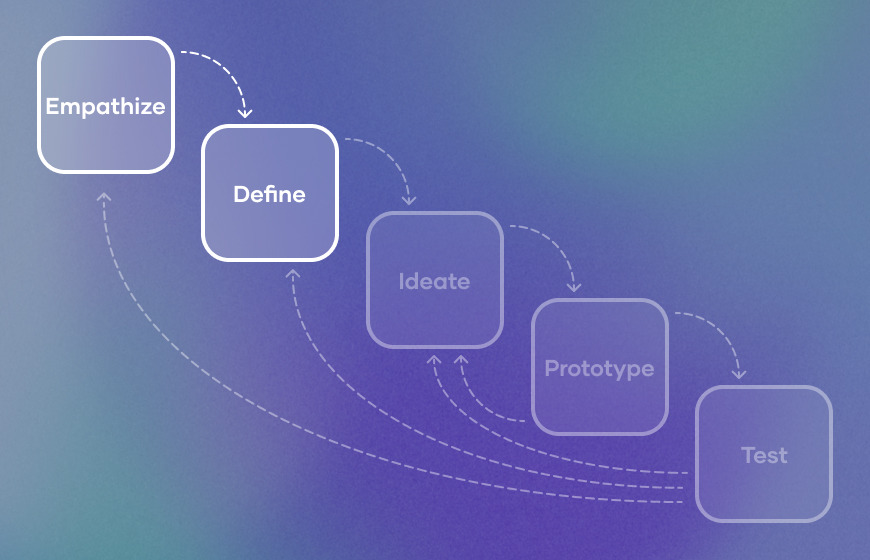This is my interpretation of the five stage design thinking process initally developed by Hasso-Plattner Institute of Design at Stanford, commonly known as the d.school.


Empathy is crucial to human-centered design. To gain insights to user’s needs, I like to set up user interviews to explore the area of concern. By observing, engaging and empathizing with people, I gain a deeper personal understanding with their experiences, motivations and issues involved. The goal is to reduce cognitive bias and understand users' problems and their contexts. Based on the analysis of information from speaking directly with potential users, I define the problem the product is going to solve by synthesizing observations into themes across the user base. This helps establish features, functions and other elements that will allow users to solve, or at the very least minimize, their issues.





Once a human-centered problem statement has been defined, I will diverge my thinking and start generating innovative solutions as well as look for alternative ways of viewing the problem. I try to brainstorm as many ideas or problem solutions as possible during this stage. To identify the best solution for each problem, I experiment with scaled down product or feature prototypes and put them in the hands of potential users, the internal team, or other departments. These solutions are either accepted, improved, or rejected on the basis of the users’ experiences. This stage unveils a clearer view of how real users would behave, think and feel when interacting with the end product. It may also uncover potential pain points not yet discovered.




Even a released product is a work in progress. The results generated from an in use product are used to redefine problems, inform the understanding of users, and deepen the knowledge of how people think, behave and feel. Alternations and refinements are part of the nonlinear design process, which is why my favorite piece of design advice is...
Be stubborn about your goals and flexible on your methods.